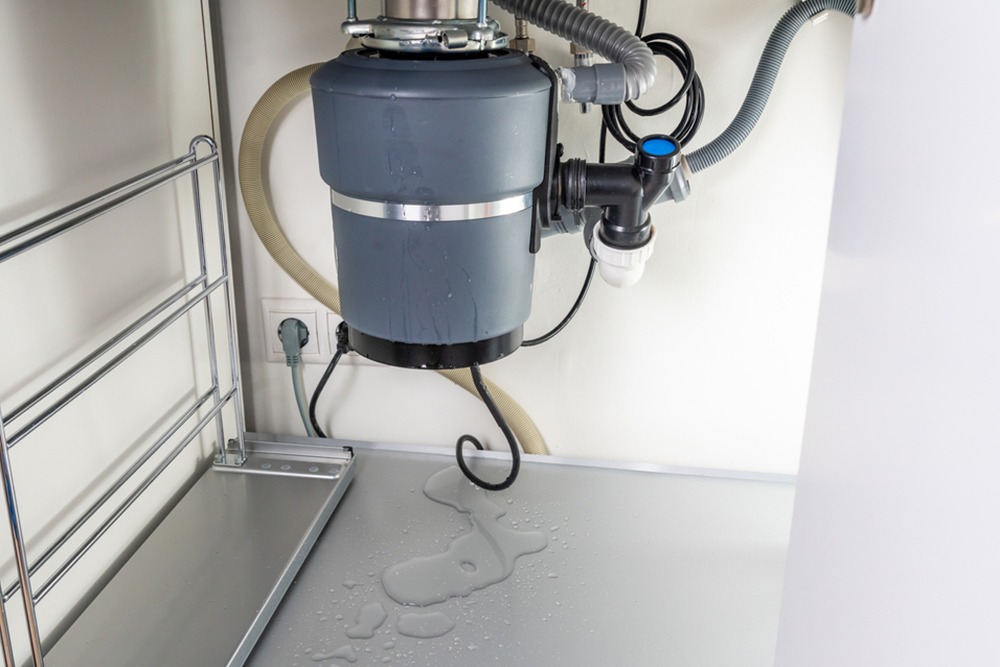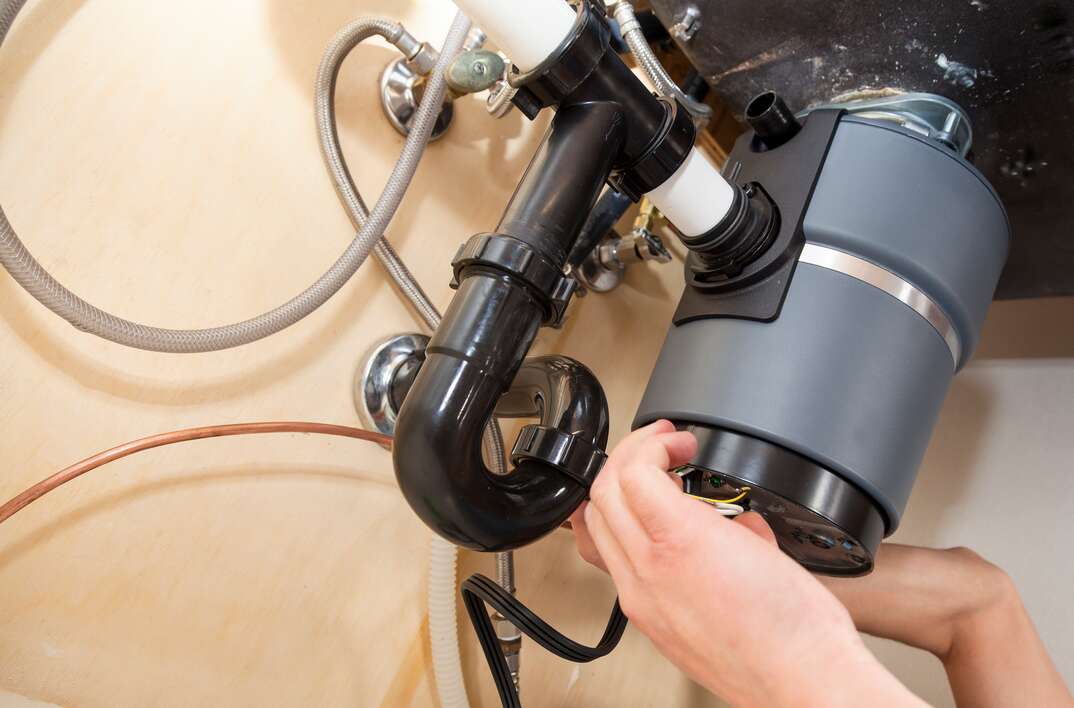The Definitive Guide to Fixing a Leaky Waste Disposal Unit
The Definitive Guide to Fixing a Leaky Waste Disposal Unit
Blog Article
We've come across the article about How to fix a pretty consistent leak from my garbage disposal down the page on the net and felt it made sense to share it with you over here.

Garbage disposals are necessary kitchen area devices that help in taking care of food waste efficiently. However, a leaking garbage disposal can be a discouraging and unpleasant trouble to manage. The good news is, several leakages can be dealt with conveniently with a couple of basic steps. In this short article, we will discuss just how to take care of a leaking garbage disposal effectively.
Intro
Garbage disposals are installed under cooking area sinks and are created to shred food waste into smaller sized pieces, permitting it to go through the pipes system quickly. While these devices are normally dependable, leakages can occur gradually due to deterioration, loosened links, or damages to the device.
Step-by-Step Overview to Taking Care Of a Leaking Garbage Disposal
Turn Off the Power
Prior to trying any type of repair work, ensure that the power to the waste disposal unit device is shut off to prevent the threat of electric shock.
Locate the Leak
Determine the exact area of the leakage and figure out the cause
Tighten Connections
Make use of a wrench to tighten any kind of loose links in between the disposal device and the plumbing system.
Change Seals or Gaskets
If the leakage results from used seals or gaskets, eliminate the old components and change them with brand-new ones.
Patching Fractures or Holes
For splits or openings in the disposal unit, usage epoxy or an appropriate patching material to secure the damaged location.
Determining the Source of the Leakage
Before trying to take care of a leaking waste disposal unit, it is necessary to recognize the source of the leakage. This can usually be done via visual examination or by conducting basic tests.
Visual Evaluation
Evaluate the garbage disposal system meticulously for any kind of signs of water leakage. Pay close attention to locations around seals, gaskets, and link points.
Evaluating for Leakages
One means to evaluate for leaks is by running water via the disposal system and checking for any kind of visible signs of leak.
Common Sources Of Leaks in Garbage Disposals
Worn Seals and Gaskets
Seals and gaskets play a critical function in preventing water from leaking out of the waste disposal unit. In time, these parts can deteriorate, resulting in leakages around the disposal unit.
Loose Links
The links in between the garbage disposal and the plumbing system can end up being loose gradually, causing water to leak out during operation.
Fractures or Openings in the Disposal System
Physical damage to the waste disposal unit, such as cracks or openings in the real estate, can likewise cause leaks.
Tools and Products Needed for Repairing a Dripping Garbage Disposal
Before starting the repair process, gather the essential devices and materials, including a screwdriver, adjustable wrench, plumbing professional's putty, replacement seals or gaskets, and epoxy or patching material for repairing cracks or holes.
Evaluating the Waste Disposal Unit After Repair Service
When the repair service is full, evaluate the garbage disposal by running water via it to make sure that the leak has actually been fixed.
Preventive Maintenance Tips to Prevent Future Leaks
To avoid future leaks, it is important to perform routine upkeep on your waste disposal unit. This includes keeping it clean, staying clear of placing non-food items or hard items down the disposal, and regularly looking for leakages or various other issues.
Conclusion
In conclusion, repairing a leaking garbage disposal is a fairly simple process that can be completed with fundamental tools and materials. By following the steps outlined in this article and exercising preventive maintenance, you can keep your garbage disposal in good working problem and prevent expensive repairs in the future.
HERE’S HOW TO FIX YOUR GARBAGE DISPOSAL
WHAT TO DO IF SOMETHING IS STUCK IN YOUR GARBAGE DISPOSAL
If the impeller won’t turn, there’s probably something stuck in the disposal. It could be a steak bone or peach pit, although plumbers report pulling all sorts of inappropriate objects out of disposals, such as bottle caps or aluminum foil. Make sure power to the disposal is off, and look inside to see if you can see the source of the jam.
Never stick your fingers in a disposal. Pull out anything you see with tongs or pliers.
If the disposal still won’t work, it may be time to call a plumber or consider buying a new disposal. GEM Plumbing & Heating is here for all of your garbage disposal needs.
WHAT TO DO IF YOUR GARBAGE DISPOSAL DRAIN IS CLOGGED
Take everything out from underneath your sink and put a bucket or other container under your disposal to catch any water that drains out. Disconnect your disposal from the power supply. If it’s plugged into a wall outlet, unplug it. If it’s hardwired into an electrical box, go to the electrical panel and turn off the breaker for the disposal. Pour ¼ cup of baking soda into the drain, followed by ½ cup of white vinegar. Give the solution a few minutes to fizz and do its work. Look into the disposal with a flashlight to see if you can see an object that might be causing the clog. If you see it, remove it using tongs or pliers. MORE TIPS ON DEALING WITH A CLOGGED GARBAGE DISPOSAL
Never use drain cleaner in a garbage disposal. It can damage the plastic parts inside the disposal. You can also be splashed with the caustic liquid while working to clear the clog. Beware! Never stick your fingers into a garbage disposal. Trust us — not a good idea. In many instances, your dishwasher drains through your garbage disposal. This allows the disposal to grind any large food particles that may be drained out of your dishwasher. There are some jurisdictions, however, where the plumbing code prohibits such a connection. WHAT TO DO WHEN YOUR DISHWASHER DRAINS THROUGH THE DISPOSAL
Run some water in the sink so your plunger has at least a ½-inch of water to create a seal and plunge vigorously up and down several times. You may need to repeat this several times. Run hot water down the drain to clear any residue that remains.

As a fervent person who reads about Garbage Disposal Leaking From Bottom, I assumed sharing that piece of writing was worth the trouble. Make sure you take the opportunity to share this blog entry if you liked it. I praise you for your time. Come back soon.
Check Us Out Report this page